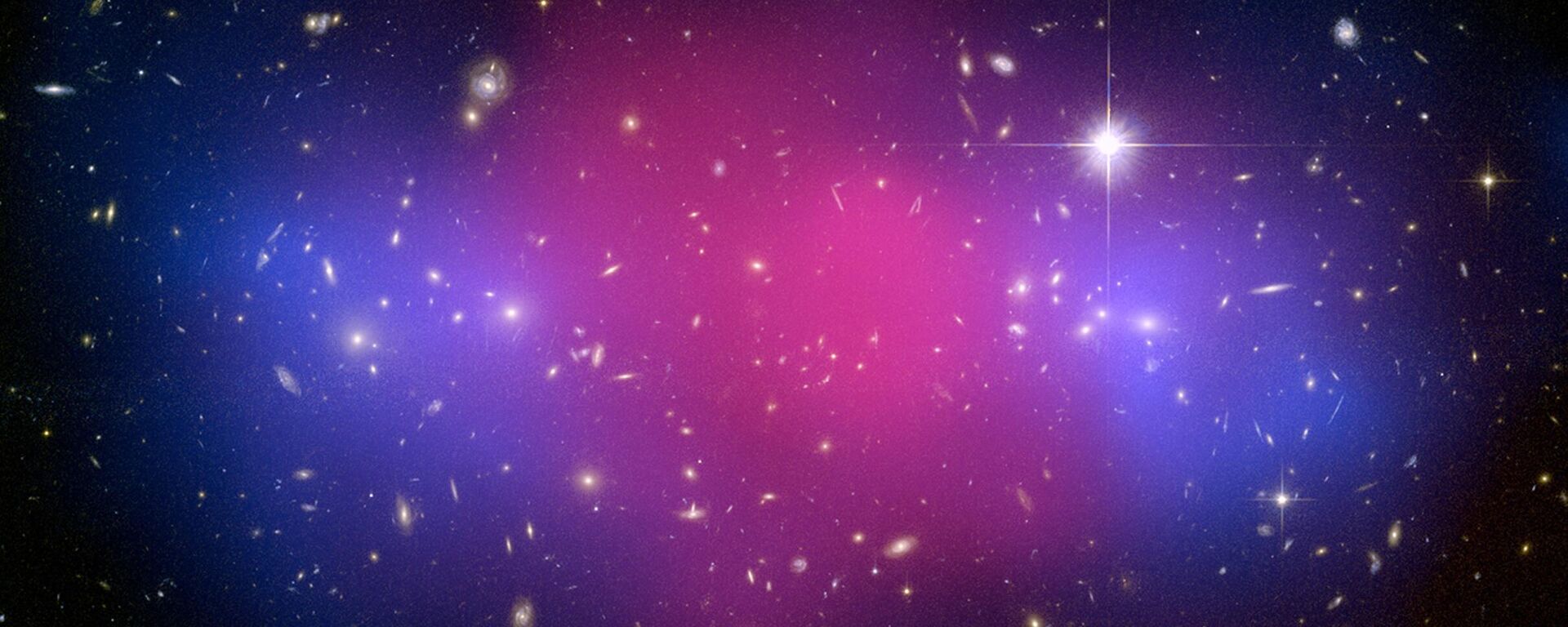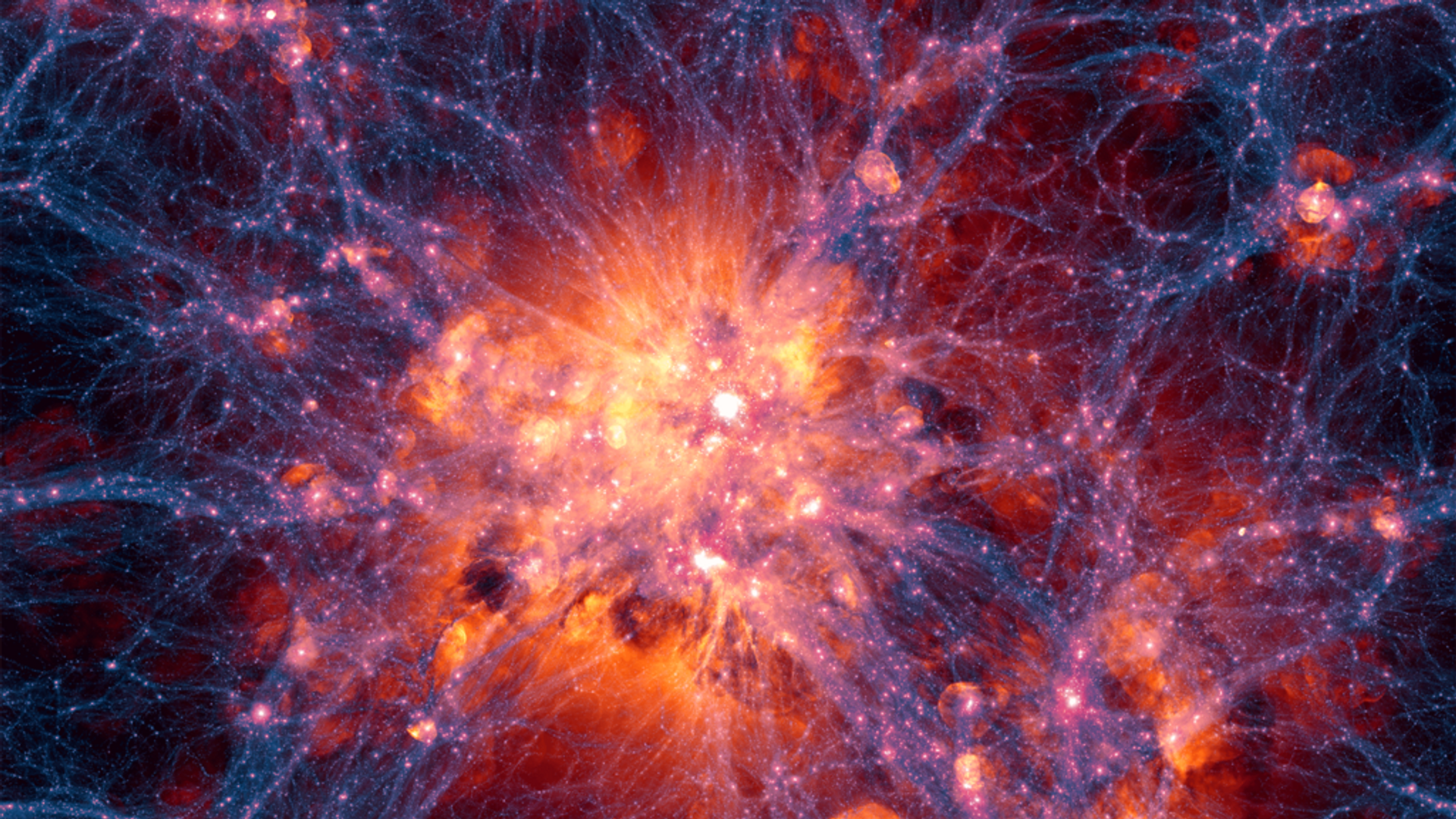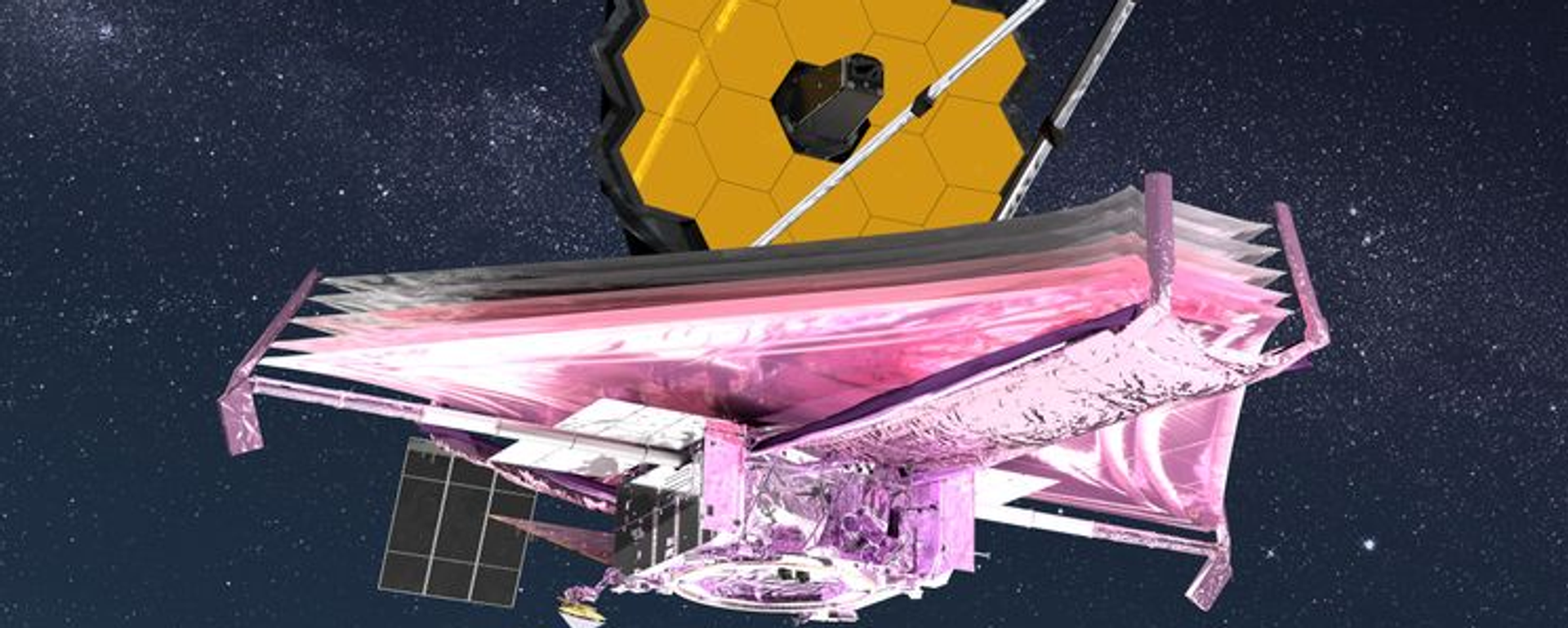https://sputnikglobe.com/20230718/three-potential-dark-stars-powered-by-dark-matter-spotted-using-webb-telescope-1111975934.html
Three Potential ‘Dark Stars’ Powered by Dark Matter Spotted Using Webb Telescope
Three Potential ‘Dark Stars’ Powered by Dark Matter Spotted Using Webb Telescope
Sputnik International
Astronomers believe they have found three candidates for the first so-called “dark stars” ever spotted. The objects would theoretically be powered by dark matter, a substance never before directly observed by humans.
2023-07-18T20:32+0000
2023-07-18T20:32+0000
2023-07-18T20:30+0000
beyond politics
james webb space telescope (jwst)
astronomy
dark matter
star
https://cdn1.img.sputnikglobe.com/img/107852/75/1078527561_0:225:1024:801_1920x0_80_0_0_c987d55d8596b1b9af4a6dcd85f97edf.png
According to the scientists, the three potential dark stars were mis-identified as galaxies when first spotted using imagery from the James Webb Space Telescope (JWST), a powerful orbital telescope used to peer into the early universe, which in space appears as objects further and further away. The three objects were formed between 320 million and 420 million years after the Big Bang, making them among the oldest objects ever discovered by humans.Dark stars are supposedly made up of mostly hydrogen and helium, like regular fusion-powered stars, but would also have a sizable portion of dark matter inside them - a theoretical type of matter that doesn’t interact with light. Scientists believe that when two dark matter particles collide, they annihilate each other, releasing a huge amount of gamma-wave radiation. Such a process would create colossal amounts of energy inside a star - far greater than nuclear fusion could achieve by itself.What’s more, such clouds wouldn’t even have to follow the same rules as regular fusion stars: they could be less compact and even add more matter as time goes on, rather than blasting it away from its surface as fusion stars do. That means they could reach huge proportions, up to 100 times the width of the sun.However, according to the theory, dark matter stars were limited to the environment of the early universe, before big galaxies had formed. Such massive objects were destined to become the cores of protogalaxies, which as they formed into proper galaxies, began depriving them of their fuel. Instead, such clouds of matter would begin collapsing to condense into fusion-powered stars, although the end of some dark matter stars might have resulted in black holes as well.The JWST hit headlines recently for observing some of these early black holes for the first time, including one supermassive black hole that formed just 570 million years after the Big Bang. Such large black holes typically form the center of galaxies, meaning this one might have once been a dark star.However, it’s far from certain that Freese’s crew have found dark stars, and they have been careful to describe the candidates as merely “consistent” with being dark stars.The find is explained in an article published recently in the Proceedings of the National Academy of Sciences (PNAS).Scientists have never directly observed dark matter, only theorized that it must exist and account for as much as 85% of matter in the universe, in order to account for the observed movements of galaxies that cannot be explained by quantities of observable matter.Earlier this month, the European Space Agency (ESA) launched its Euclid satellite as part of a mission to study the observable effects of dark matter, such as how the gravity of galaxies bends the light from objects behind them, making them observable to humans on Earth from the opposite side of the galaxy.
https://sputnikglobe.com/20221127/how-a-musty-gold-mine-became-key-in-the-quest-for-mysterious-dark-matter-1104745629.html
https://sputnikglobe.com/20230712/photo-nasa-drops-stunning-new-space-image-on-webb-telescopes-first-anniversary-1111836705.html
Sputnik International
feedback@sputniknews.com
+74956456601
MIA „Rossiya Segodnya“
2023
News
en_EN
Sputnik International
feedback@sputniknews.com
+74956456601
MIA „Rossiya Segodnya“
Sputnik International
feedback@sputniknews.com
+74956456601
MIA „Rossiya Segodnya“
dark star; dark matter; james webb space telescope; jwst
dark star; dark matter; james webb space telescope; jwst
Three Potential ‘Dark Stars’ Powered by Dark Matter Spotted Using Webb Telescope
Astronomers believe they have found three candidates for the first so-called “dark stars” ever spotted. The objects would theoretically be powered by dark matter, a substance never before directly observed by humans.
According to the scientists, the three potential dark stars were mis-identified as galaxies when first spotted using imagery from the James Webb Space Telescope (JWST), a powerful orbital telescope used to peer into the early universe, which in space appears as objects further and further away.
The three objects were formed between 320 million and 420 million years after the Big Bang, making them among the oldest objects ever discovered by humans.
According to the theory, mistaking a dark star for a galaxy would be rather easy.
Dark stars are supposedly made up of mostly hydrogen and helium, like regular fusion-powered stars, but would also have a sizable portion of dark matter inside them - a theoretical type of matter that doesn’t interact with light.
Scientists believe that when two dark matter particles collide, they annihilate each other, releasing a huge amount of gamma-wave radiation. Such a process would create colossal amounts of energy inside a star - far greater than nuclear fusion could achieve by itself.

27 November 2022, 08:12 GMT
What’s more, such clouds wouldn’t even have to follow the same rules as regular fusion stars: they could be less compact and even add more matter as time goes on, rather than blasting it away from its surface as fusion stars do. That means they could reach huge proportions, up to 100 times the width of the sun.
"These things are atomic matter that is powered by dark matter, and one supermassive dark star could be as bright as an entire galaxy containing normal fusion-powered stars," said Katherine Freese, an astrophysicist at the University of Texas at Austin and lead author of the study.
However, according to the theory, dark matter stars were limited to the environment of the early universe, before big galaxies had formed. Such massive objects were destined to become the cores of protogalaxies, which as they formed into proper galaxies, began depriving them of their fuel. Instead, such clouds of matter would begin collapsing to condense into fusion-powered stars, although the end of some dark matter stars might have resulted in black holes as well.
The JWST hit headlines recently for observing some of these early black holes for the first time, including
one supermassive black hole that formed just 570 million years after the Big Bang. Such large black holes typically form the center of galaxies, meaning this one might have once been a dark star.
However, it’s far from certain that Freese’s crew have found dark stars, and they have been careful to describe the candidates as merely “consistent” with being dark stars.
“Proposing something entirely new is always less probable,” said Freese. “But if some of these objects that look like early galaxies are actually dark stars, the simulations of galaxy formation agree better with observations.”
The find is explained in an article
published recently in the Proceedings of the National Academy of Sciences (PNAS).
Scientists have never directly observed dark matter, only theorized that it must exist and account for as much as 85% of matter in the universe, in order to account for the observed movements of galaxies that cannot be explained by quantities of observable matter.
Earlier this month, the European Space Agency (ESA)
launched its Euclid satellite as part of a mission to study the observable effects of dark matter, such as how the gravity of galaxies bends the light from objects behind them, making them observable to humans on Earth from the opposite side of the galaxy.




